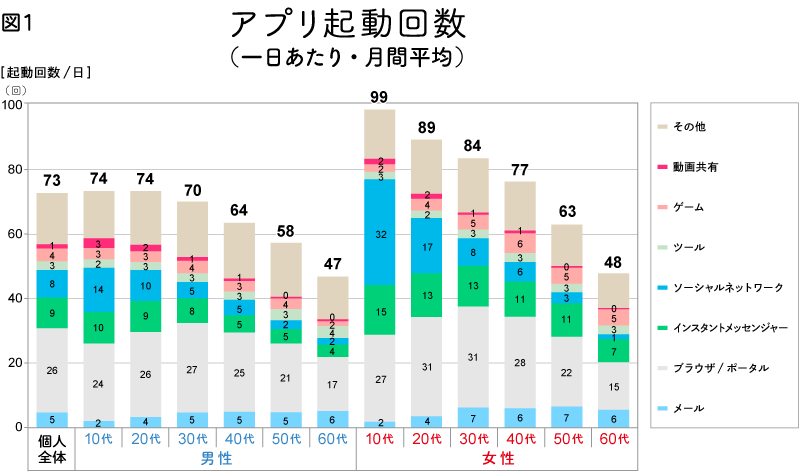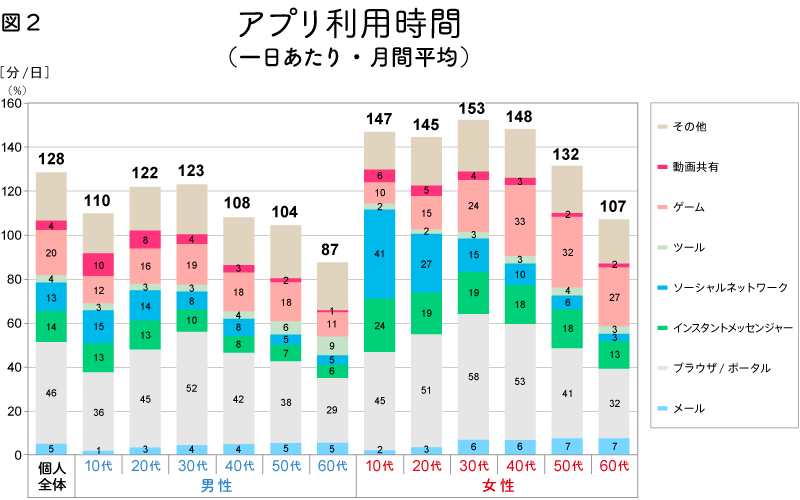Heavy users launch apps even more frequently. This data clearly illustrates smartphone dependency.
The most frequent launches are for instant messengers like LINE and Facebook Messenger. The light blue above them represents social media like Twitter, Instagram, and Facebook, clearly showing how frequently apps are launched to meet communication needs. Additionally, women launch apps more frequently than men.
Now, what trends emerge when we focus on app usage time rather than the number of times apps are launched?
Look at the pink segment in Figure 2. What this reveals is that, surprisingly, middle-aged and older women play games the most.
Of course, many middle-aged and older adults don't own smartphones, but among those who do, middle-aged and older women play games most frequently. They prefer two types: puzzle games and character-raising games featuring animals or other creatures.
While their real lives are constrained by daily routines, work, housework, childcare, and caregiving, there seems to be a growing sense that another dimension of time exists on the other side of their devices. It's likely that these small pockets of time accumulate as they habitually slip into that other dimension.
Looking at teenage girls, while messenger apps and social media had high usage frequency, their share of total time spent was low. This indicates that the average time spent per session is quite short.
Video app usage will continue to expand!
We can glimpse how these communication apps contribute to smartphone users' sense of busyness. Over the past decade, our attention spans have become increasingly short.
Furthermore, analyzing by usage time rather than frequency reveals apps in genres like games and video sharing starting to gain prominence. This is particularly noticeable among teenage males: while their frequency-based usage isn't significant, their share of time spent is quite substantial. This likely indicates the frequent use of video sharing apps like YouTube.
As mentioned at the outset, this decade saw several overlapping catalysts transform our lives into a smartphone-centric world: the release of diverse smartphone models, the expansion of user contracts driven by carrier strategies, and the rise of messenger apps fueled by heightened communication needs following social events like the earthquake.
Amidst this rapid change, however, a trend toward app usage consolidation has recently begun to emerge. We may not see the same relentless stream of new apps driving constant smartphone renewal as before.
However, as communication environments continue to advance—such as the anticipated rollout and development of 5G technology, expected between 2019 and 2020—the use of video apps, for example, is also expected to increase.
Precisely because the smartphone ecosystem has matured, analyzing this trend requires a comprehensive examination that includes these external factors.

 Figure 1 shows the average number of app launches per day per month (by definition, days and people not using apps are included in this average). A figure of 99 launches for female teens suggests that heavy users might easily launch apps around 150 times per day.
Figure 1 shows the average number of app launches per day per month (by definition, days and people not using apps are included in this average). A figure of 99 launches for female teens suggests that heavy users might easily launch apps around 150 times per day.



